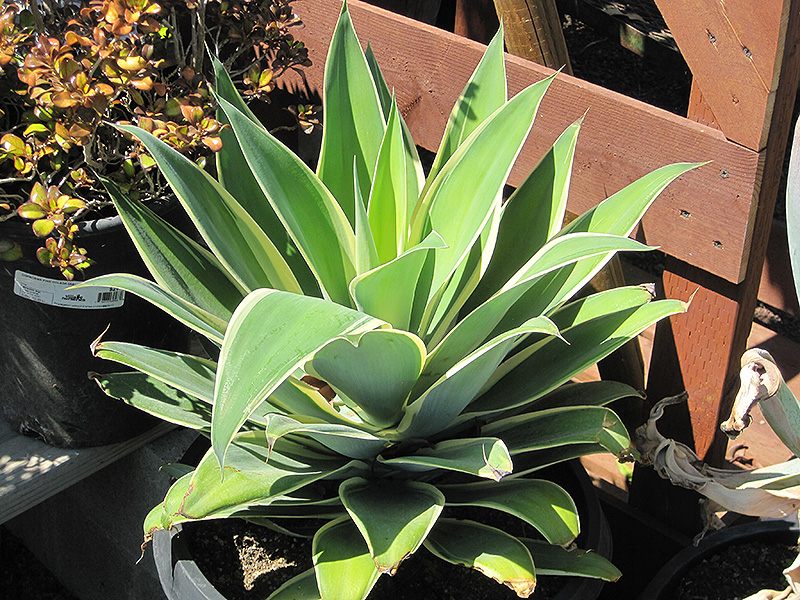>> Home
Ray of Light Fox Tail Agave
Agave attenuata 'AGAVWS'
Plant Height: 5 feet
Flower Height: 8 feet
Spread: 7 feet
Sunlight:
![]()
Hardiness Zone: 8
Other Names: Century Plant
Brand: Monrovia
Description:
An appealing variety producing a rosette of wide, green-gray foliage with crisp white margins, on smooth gray stems; infrequent flower stalks curve toward the ground, then arch back upward, resembling a fox's tail; a great accent planting
Ornamental Features
Ray of Light Fox Tail Agave features bold spikes of chartreuse cup-shaped flowers rising above the foliage in mid summer. It has grayish green foliage edged in white. The succulent pointy leaves remain grayish green throughout the winter. The smooth bark and gray branches add an interesting dimension to the landscape.
Landscape Attributes
Ray of Light Fox Tail Agave is a multi-stemmed evergreen shrub with a more or less rounded form. Its strikingly bold and coarse texture can be very effective in a balanced landscape composition.
This shrub will require occasional maintenance and upkeep, and usually looks its best without pruning, although it will tolerate pruning. Deer don't particularly care for this plant and will usually leave it alone in favor of tastier treats. Gardeners should be aware of the following characteristic(s) that may warrant special consideration;
- Suckering
Ray of Light Fox Tail Agave is recommended for the following landscape applications;
- Accent
- Rock/Alpine Gardens
- General Garden Use
Planting & Growing
Ray of Light Fox Tail Agave will grow to be about 5 feet tall at maturity extending to 8 feet tall with the flowers, with a spread of 7 feet. It tends to fill out right to the ground and therefore doesn't necessarily require facer plants in front, and is suitable for planting under power lines. It grows at a slow rate, and under ideal conditions can be expected to live for approximately 10 years.
This shrub should only be grown in full sunlight. It prefers dry to average moisture levels with very well-drained soil, and will often die in standing water. It is considered to be drought-tolerant, and thus makes an ideal choice for xeriscaping or the moisture-conserving landscape. It is not particular as to soil pH, but grows best in poor soils. It is highly tolerant of urban pollution and will even thrive in inner city environments. This is a selected variety of a species not originally from North America. It can be propagated by multiplication of the underground bulbs; however, as a cultivated variety, be aware that it may be subject to certain restrictions or prohibitions on propagation.

